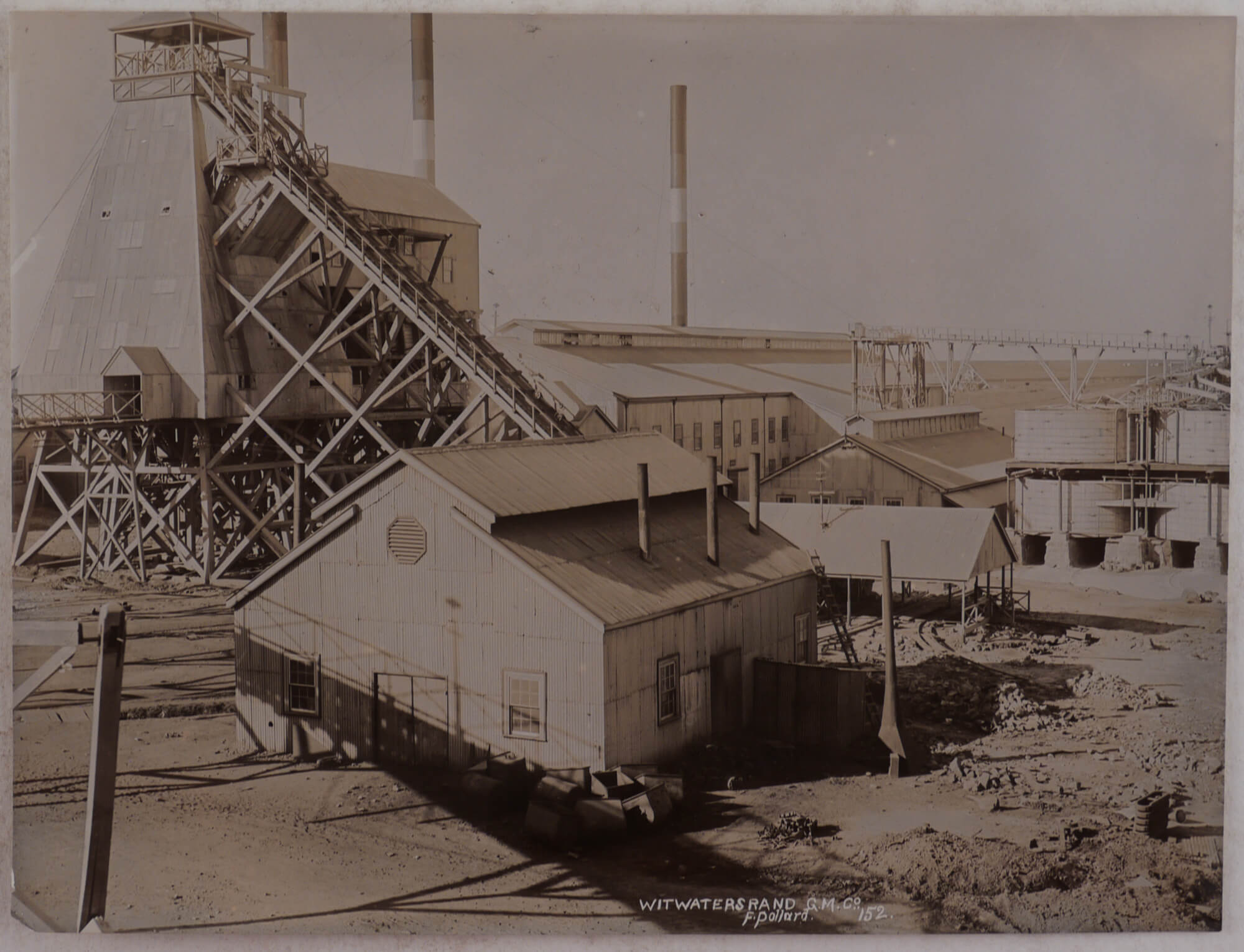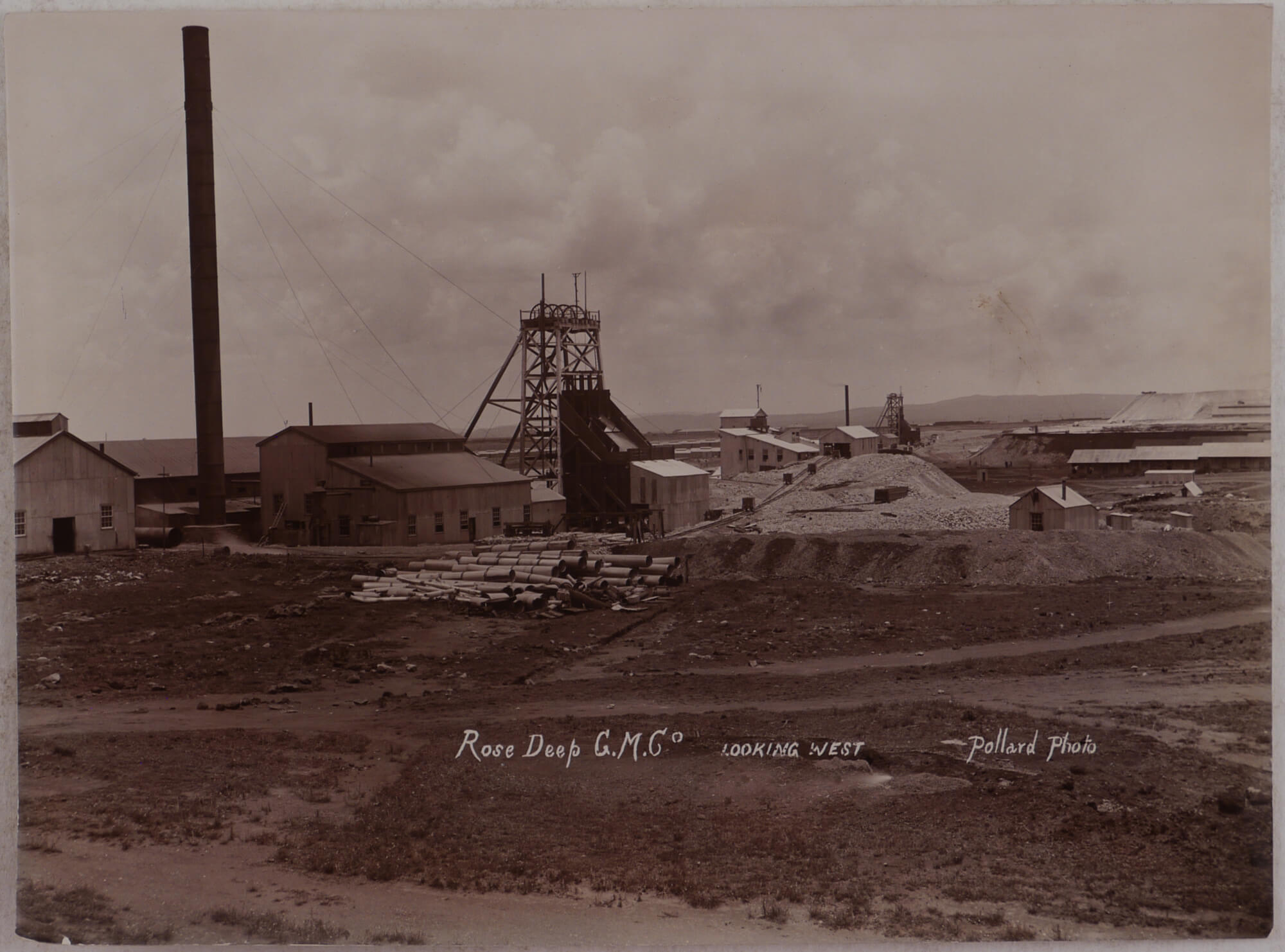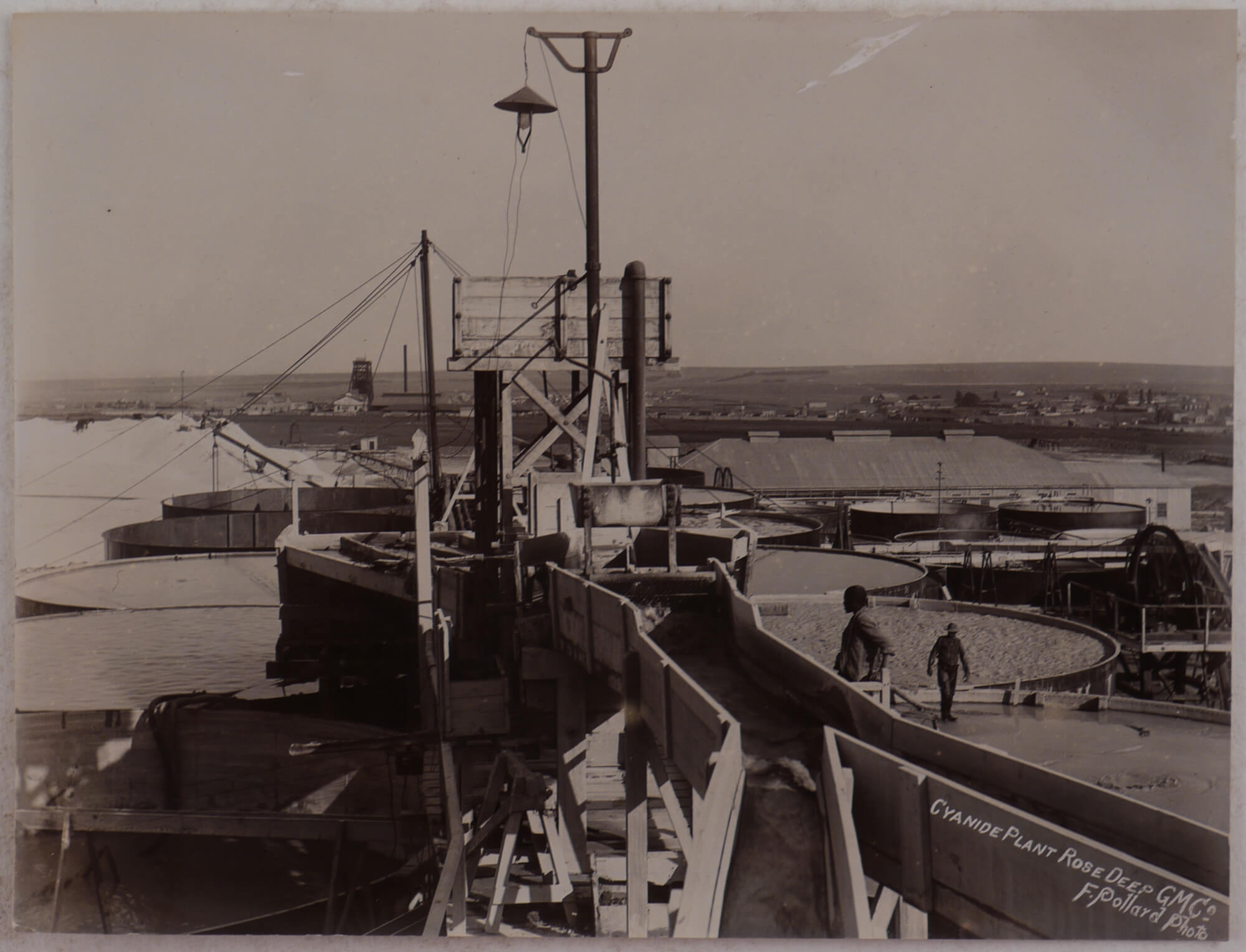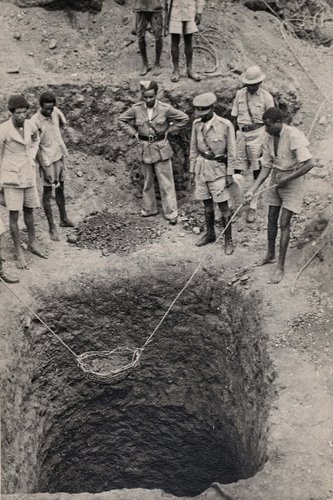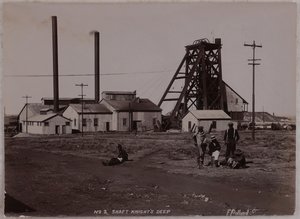





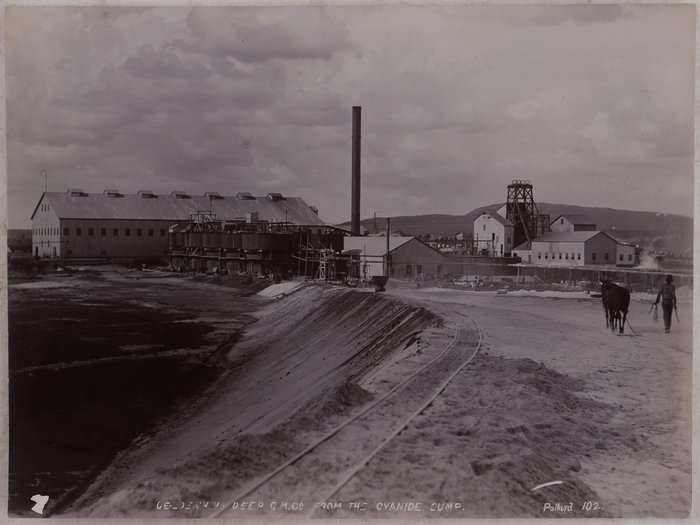

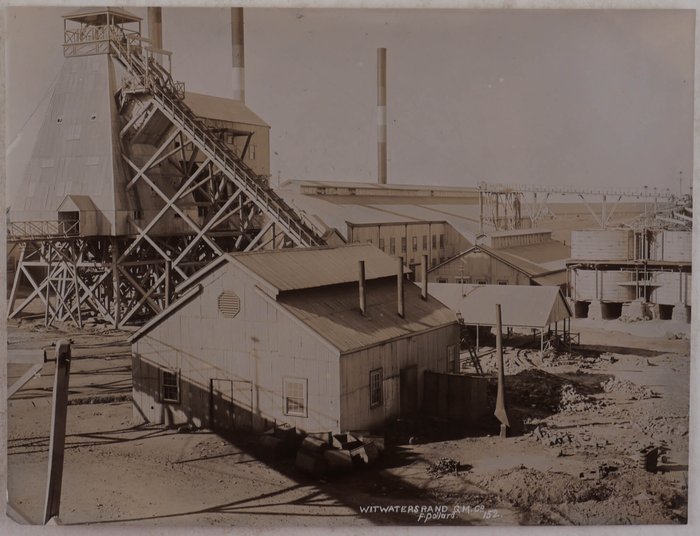
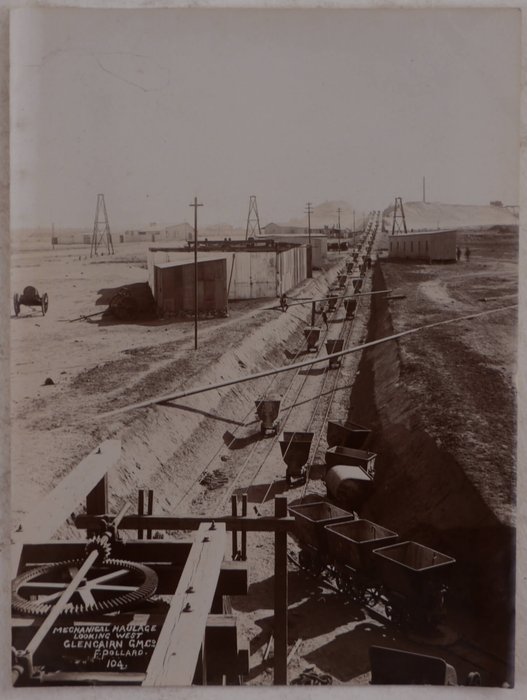
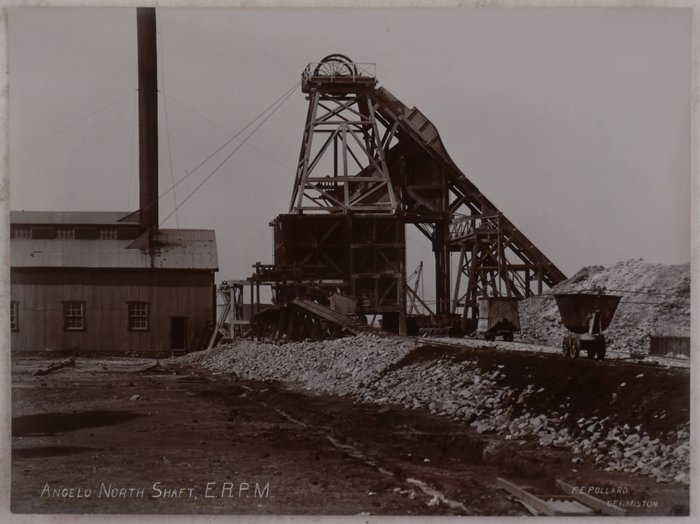

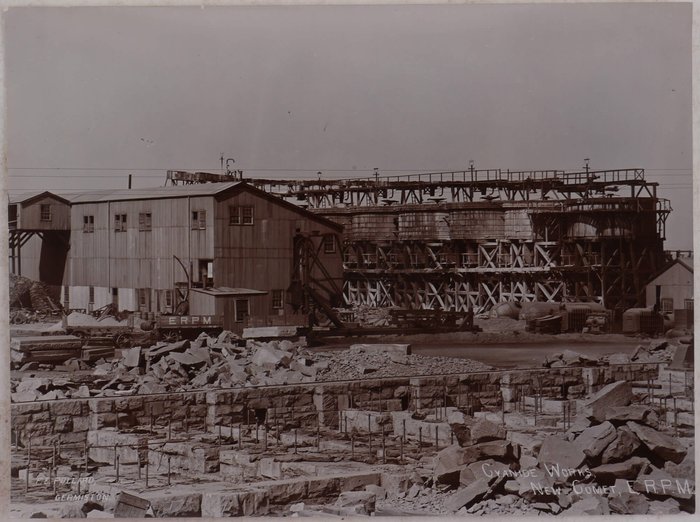













#PA10
Ca. 1900
Thirty loose gelatin silver photos each ca. 15x20 cm (6x8 in). All but five photos captioned and signed in negative; three photos with period pencil captions on the mounts. A couple of photos very mildly faded, a couple with minor creases on the extremities, one photo with a loss of the left lower corner, but overall a very good collection of strong sharp photos.
Interesting extensive collection of original photos of the famous Witwatersrand gold mines, taken in the early 1900s by local photographer, F.E. Pollard. During his career, he operated a studio in Germiston and worked in Johannesburg in a partnership with Cape Town photographer, Joseph Louis Levi Zadik. The photos include general and close-up views of various facilities of the Rose Deep, New Primrose, Simmer & Jack, New Comet, Angelo, Glencairn; Witwatersrand, Wemmer, Geldenhuis Deep, Knight’s Deep, Jumpers Deep, Ferreira gold mines, etc. At least one of the photos were reproduced as an illustration in “Views of the Transvaal: Johannesburg with its marvellous gold industry” (Johannesburg: W. Saphra, n.d., ca. 1900s). Overall a rare collection of well-executed early studio photos of Johannesburg gold mines.
“On 14 September 1886, the first large mining company on the Reef, the Witwatersrand Gold Mining Company, was formed with a total nominal capital of £3,063,000. The first crushing battery, consisting of five stamps, had been erected on the Reef in 1885 to service the Struben's excavations on the lower West Rand reef, but this was a small operation, and the first crushing machinery ordered specifically for the new Reef diggings began to arrive from the coast in 1887. The first of these to be erected was a three-stamp Sandycroft on the Jubilee Mine, which came into operation on 22 April of that year, and by the end of 1887 it had been followed into production by the Wemmer, Ferreira, Salisbury, Wits (Knights), Meyer & Charlton, George Goch, Jumpers, City and Suburban, Geldenhuis Estates, Langlaagte, Robinson and Wolhouter mines. By then 14 mines and 93 stamps were in operation, with a total annual output of 19,080 oz of gold” (Discovery of the Gold in 1884/ South African History Online).
List of captions: Rose Deep G.M.Co. looking west; Slimes plant, Rose Deep G.M.Co.; Cyanide plant, Rose Deep G.M.Co. (two different views); The New Primrose Gold Mine; View from New Primrose looking south; Cyanide works, New Primrose; A stope, New Primrose Gold Mine, Johannesburg; New Primrose headgear; Simmer & Jack G.M.Co., New Mill 280 stamps; No. 6 shaft, Simmer & Jack G.M.C.; New Comet main shaft, E.R.P.M.; Cyanide works, New Comet, E.R.P.M.; Phoenix Shaft, New Comet, E.R.P.M.; Angelo north shaft, E.R.P.M.; Mechanical haulage looking west, Glencairn G.M.Co. (two different views); Witwatersrand G.M.Co.; No. 2 shaft, Wemmer G.M.Co., Johannesburg; Geldenhuis Deep G.M.Co. from the cyanide dump; No. 2 shaft, Knight’s Deep; Ferreira G.M.Co., Johannesburg; 100 stamp mill, Jumpers Deep G.M.Co.; Jumpers Deep G.M.Co., Fr. station; May Consp. cyanide works; Headgear, May Consp. G.M.Co.








